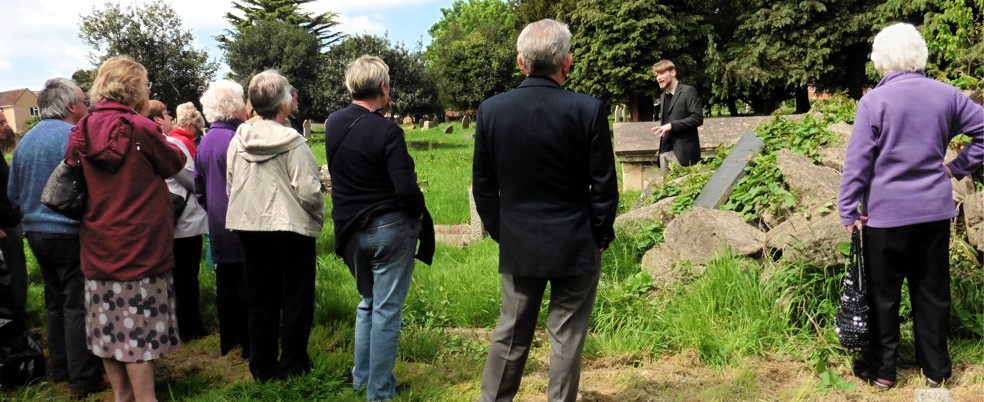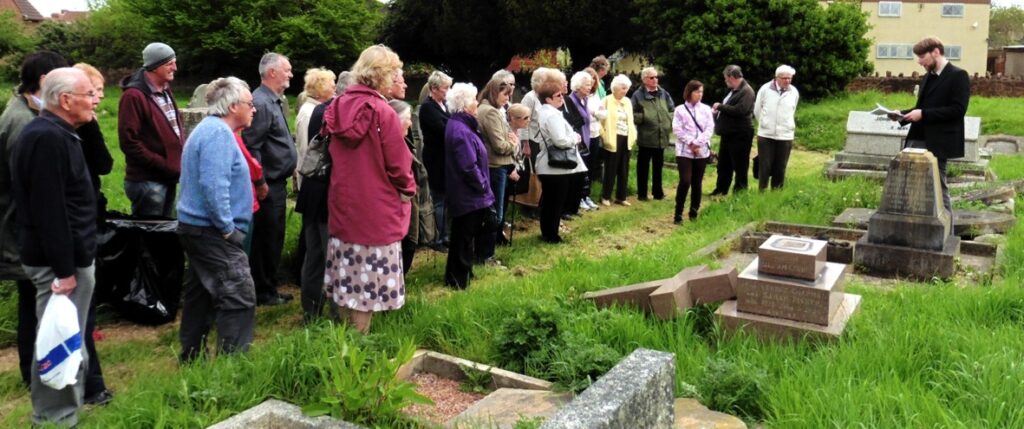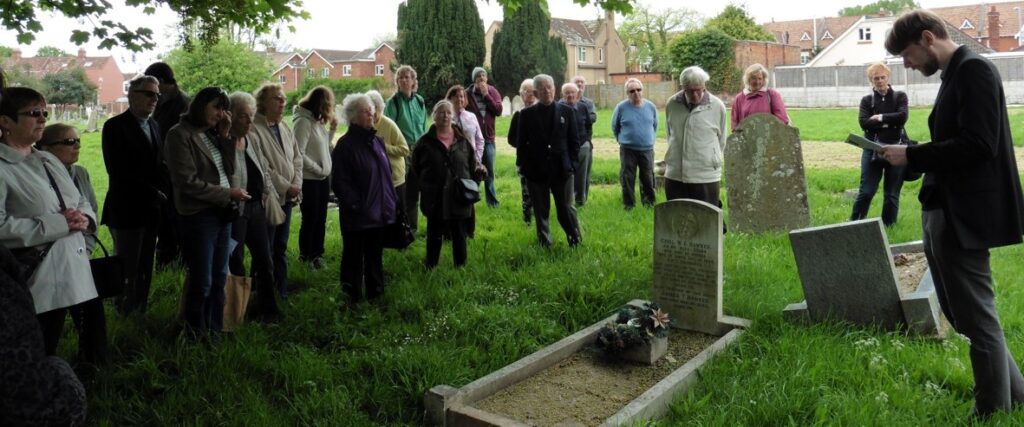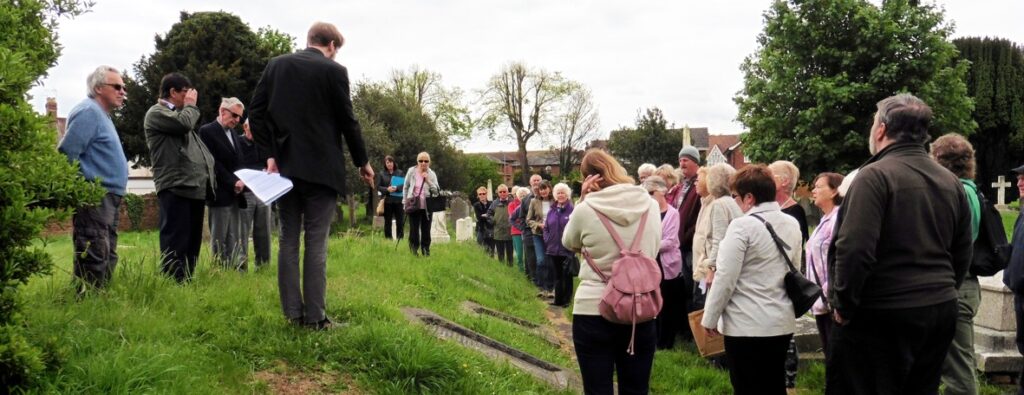Report by Bernice Lashbrook
On Saturday morning 14 May 2016, some 40 people, members of the Friends of the Wembdon Road Cemetery and visitors, were welcomed to the Cemetery for a guided walking tour. On a bright sunny morning we set off on the tour to hear the stories of many of the past Mariners of Bridgwater who are interred there and which was led by our Chairman, and Historian, Miles Kerr-Peterson.
Bridgwater, close to the sea, has produced notable sea-faring figures, the most renowned being Robert Blake, General-at-Sea during the Civil War. Although not buried in the Cemetery he is still regarded as Bridgwater's most famous son. We learnt of other navel men who were buried here, such as Cecil Hawkes, who was killed aboard HMS Edinburgh in the first weeks of the Second World War, when the Luftwaffe attacked Rosyth in the Firth of Forth.
The opening of the docks in 1841 saw the growth of trade which brought considerable wealth to the town through the export of the products of a great number of Brick and Tile manufacturers in the town as well as other merchandise. But, as we all know, this began to decline with the building of the Severn Railway Tunnel, which caused an end of the coal shipping trade and later suffered as a result of the decline of the local Brick and Tile industry.
Miles included in his tour the stories of many other 'sons of Bridgwater' who had given their lives not only in war but during the course of their work in shipping Bridgwater's goods around the world, often losing their lives in stormy and treacherous conditions. These included Thomas Walford, drowned in a storm off the Bay of Biscay aboard SS Iris in 1883.
We also learnt of men who ended their days in Bridgwater, including the German mariner, Adolphus Dufour, who sadly drowned in the River Parrett in 1884 and was buried in the Paupers' section of the Wembdon Road Cemetery, far from his home and loved ones.
One poignant story included was that of a man called Cyril Ricks. His memorial in the Cemetery was only discovered, under a pile of brambles, last year. Ricks grew up in George Street and served as a Shop Keeper for First Class Passengers on a succession of ships. In 1912 he got a job on board a brand new liner; the Titanic. Of course on this ship he was sadly drowned when it hit an iceberg. His body was not recovered but a memorial was erected in his memory in the Cemetery.
We learnt how Bridgwater prospered around shipping. Men like George Bryant Sully, a coal and timber merchant, sometime Mayor, as well as chairman of the Port and Navigation Committee, ordered vessels to be built in the shipyard of Francis J Carver and Sons (who built the famous Irene), who was supplied with rope and materials by James Henry Waddon, who ran the extensive rope walk in Eastover. Men like Tom Frank Jones, master mariner, then sailed Sully's ships, but this particular man was killed in a gale off the Gore Sands at the mouth of the Parrett in 1895. All of these individuals now lie at rest in the cemetery.
One Mariner who did survive and who came back to lead an active life in Bridgwater was Captain George Lewis Browne. Browne was a Signals Officer on board HMS Victory with Admiral Lord Nelson at the Battle of Trafalgar. It is recorded that he gave the order to raise Nelson's famous signal 'England expects that every man will do his duty.' We also learnt of another Bridgwater man at the same battle, Aaron Crocan, who was not so fortunate. Crocan has the sad distinction of being the first man killed that day, when he fell from HMS Conqueror as the two fleets were about to engage.
The tour encapsulated a celebration of Bridgwater's prosperity in the ages of steam and sail. This exuberant part of our town's history came to an end with the final closure of the docks in the 1970's. There are still many residents in Bridgwater who have fond memories of seeing ships moored along the fronts of East and West Quays on the River Parrett.








